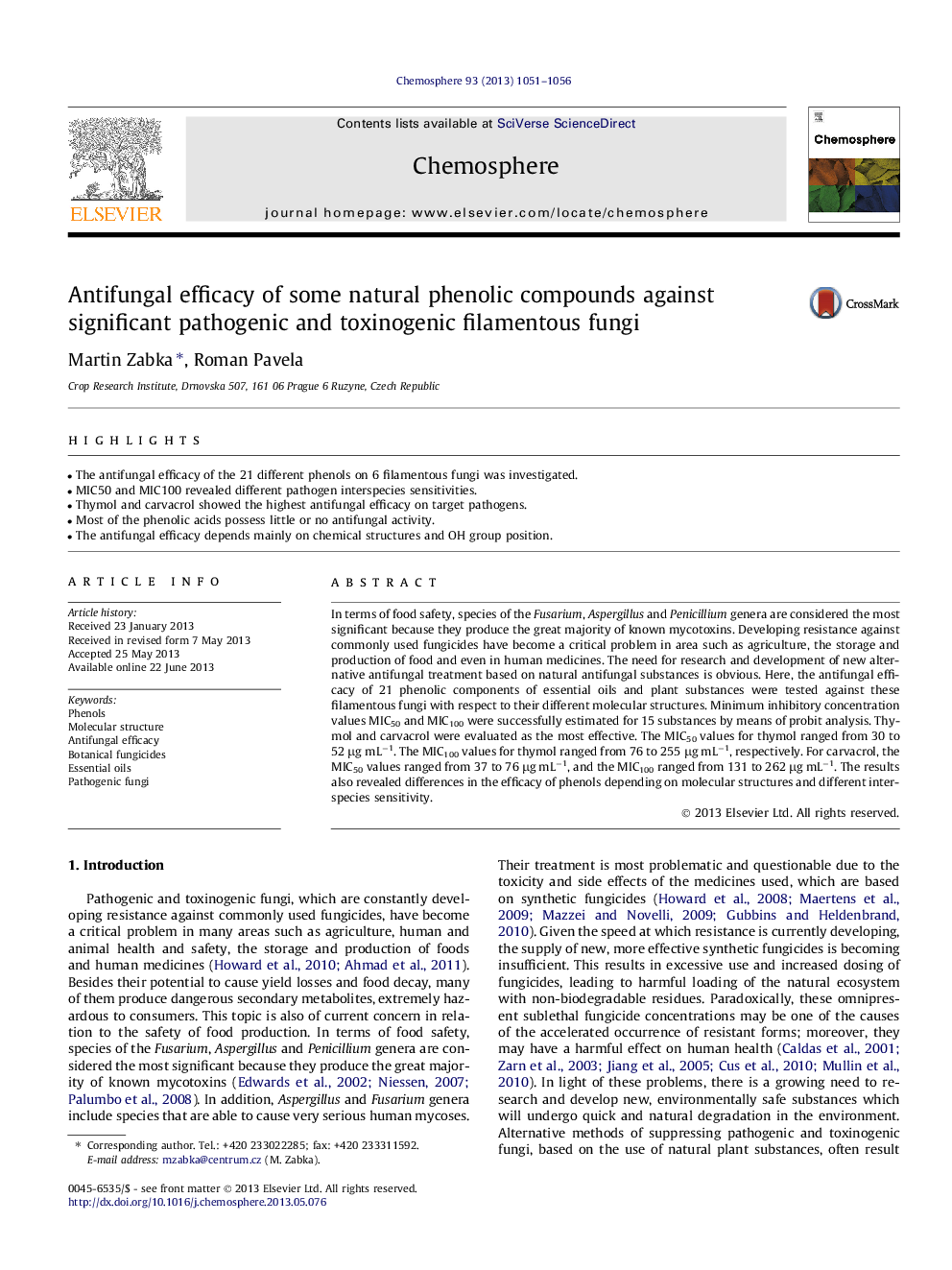| Article ID | Journal | Published Year | Pages | File Type |
|---|---|---|---|---|
| 6310307 | Chemosphere | 2013 | 6 Pages |
Abstract
In terms of food safety, species of the Fusarium, Aspergillus and Penicillium genera are considered the most significant because they produce the great majority of known mycotoxins. Developing resistance against commonly used fungicides have become a critical problem in area such as agriculture, the storage and production of food and even in human medicines. The need for research and development of new alternative antifungal treatment based on natural antifungal substances is obvious. Here, the antifungal efficacy of 21 phenolic components of essential oils and plant substances were tested against these filamentous fungi with respect to their different molecular structures. Minimum inhibitory concentration values MIC50 and MIC100 were successfully estimated for 15 substances by means of probit analysis. Thymol and carvacrol were evaluated as the most effective. The MIC50 values for thymol ranged from 30 to 52 μg mLâ1. The MIC100 values for thymol ranged from 76 to 255 μg mLâ1, respectively. For carvacrol, the MIC50 values ranged from 37 to 76 μg mLâ1, and the MIC100 ranged from 131 to 262 μg mLâ1. The results also revealed differences in the efficacy of phenols depending on molecular structures and different inter-species sensitivity.
Related Topics
Life Sciences
Environmental Science
Environmental Chemistry
Authors
Martin Zabka, Roman Pavela,
